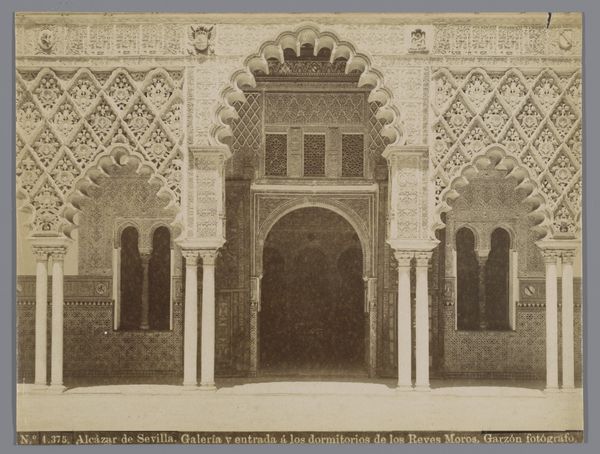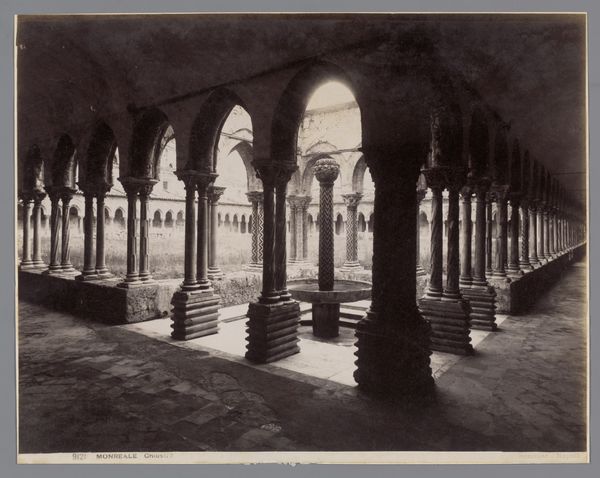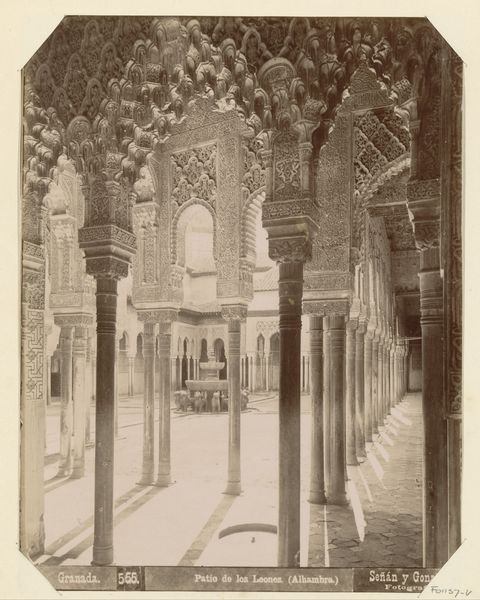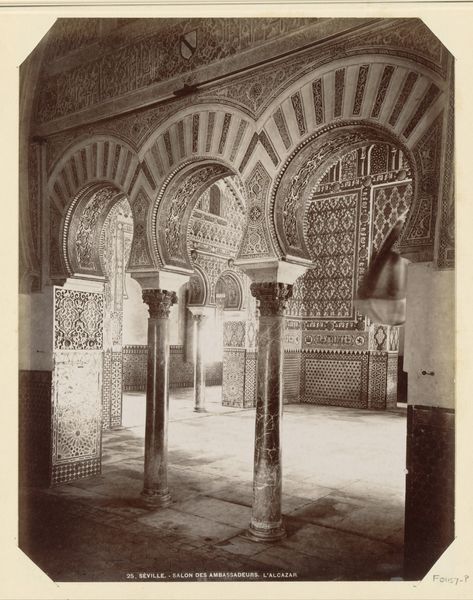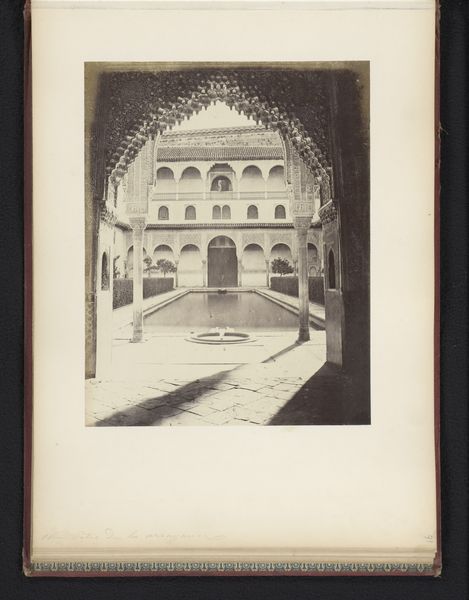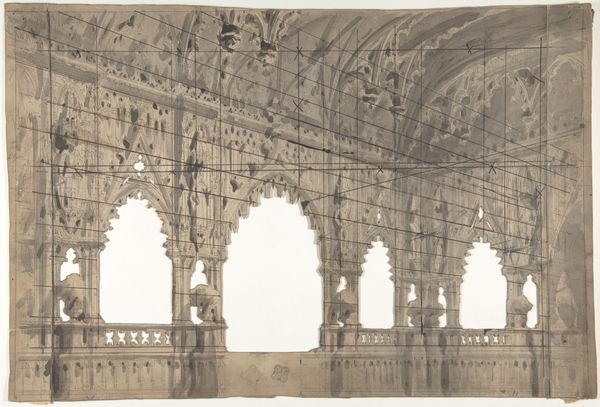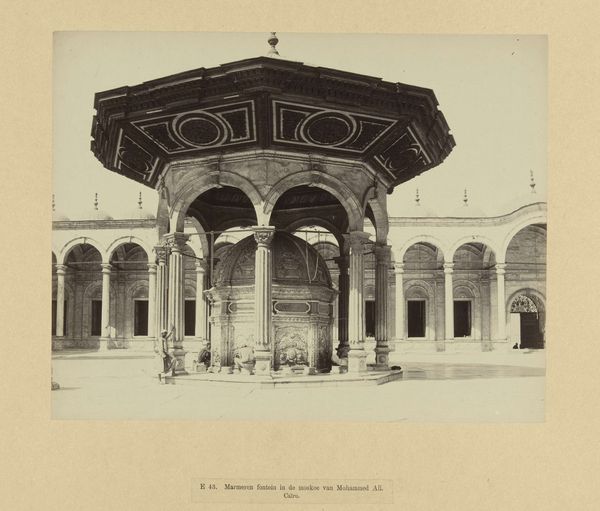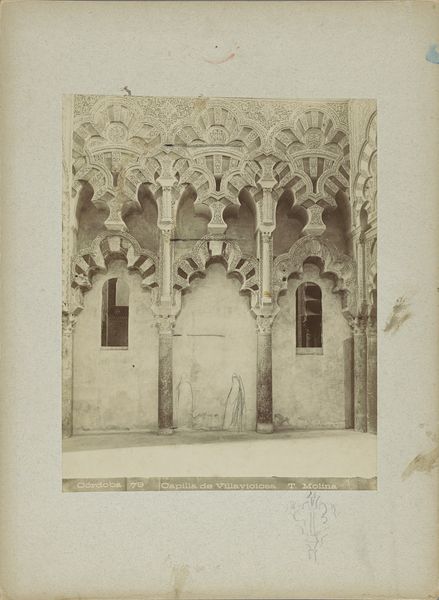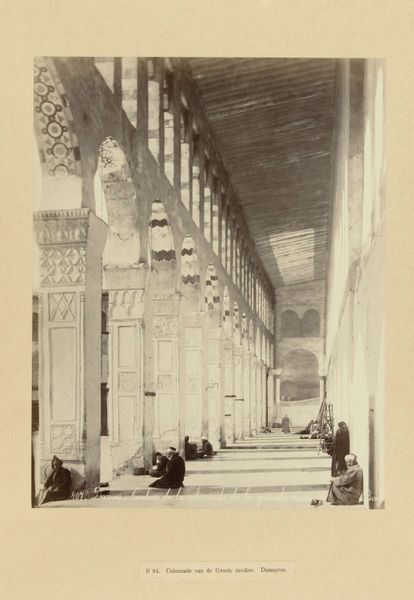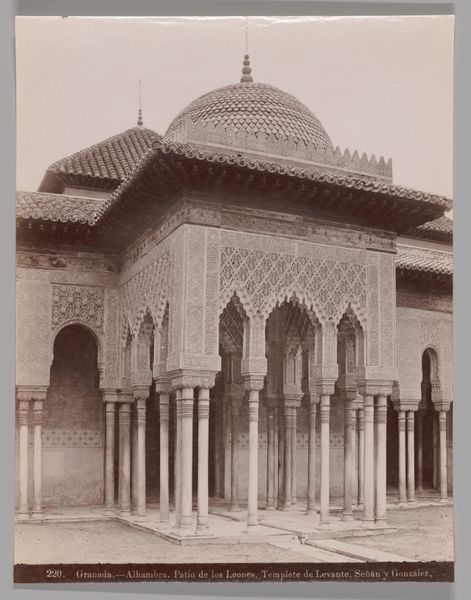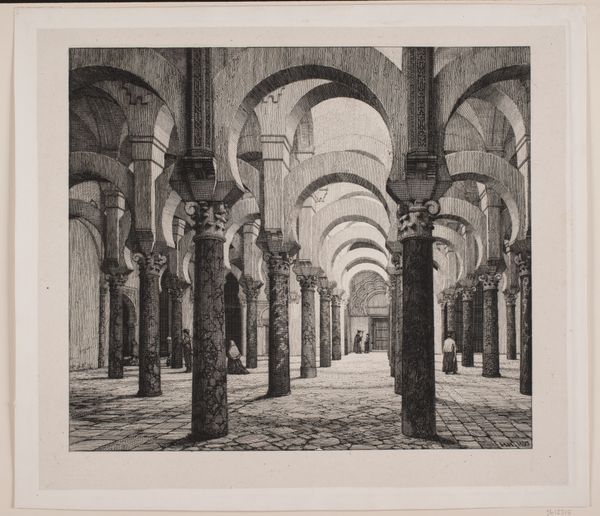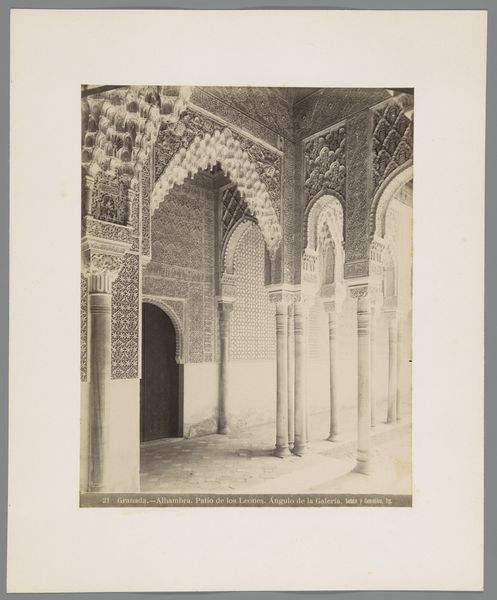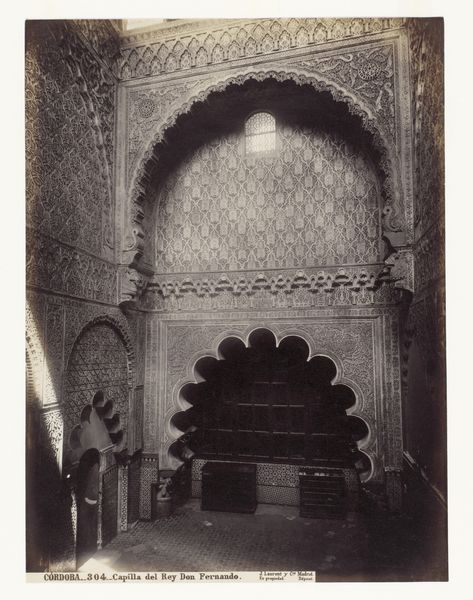
print, photography, site-specific, architecture
#
16_19th-century
# print
#
landscape
#
photography
#
geometric
#
site-specific
#
islamic-art
#
architecture
Dimensions: 6.9 × 6.9 cm (image); 20.9 × 17.1 (paper)
Copyright: Public Domain
Curator: This is William Henry Fox Talbot’s “Alcazar de Seville,” a photographic print made sometime between 1853 and 1858, currently housed here at the Art Institute of Chicago. Editor: My first impression is one of intense detail and faded elegance. It feels incredibly tactile, despite being a photograph. There's something about the almost monochromatic palette that highlights the materiality of the architecture itself. Curator: Talbot was a pioneer in photography, and his work significantly impacted the dissemination of architectural imagery. Consider how, prior to photography, depictions of such sites were reliant on engravings or paintings, often commissioned by the elite. Talbot's process allowed for broader access, albeit still within the limitations of the time. Editor: Absolutely, and his calotype process here is so crucial. We see the texture of the paper, the subtle imperfections. The scan is gorgeous and the granular quality reminds you this isn't just a perfect reproduction, but an object with its own history of production, light, and chemicals. What labor was involved in preparing, developing, and printing the image? Curator: And that labour extends back, of course, to the original construction. The Alcazar itself represents a layering of cultural and political influences; its Islamic-influenced design serving as a visual marker of Spain’s complex history, something that a 19th-century audience would understand as evidence of power, conquest, and evolving aesthetics. Editor: Yes, I immediately thought about the materials. Those columns, that intricately patterned tile work… I wonder where the resources were sourced and the craftspeople trained? Were these tiles made specifically for the elite? What do they say about the consumer culture of the time? Curator: Talbot’s photograph captures a specific moment in the history of architectural representation, shifting how structures are documented, disseminated, and ultimately perceived by a growing public audience. This image really allows the audience a kind of access not possible before. Editor: Looking at it this way, it brings up intriguing questions about how we encounter images now versus how a 19th-century viewer might have engaged with it. It's less about just documenting reality, and more about how specific methods of representation transform it. The photograph’s journey is intrinsically connected to the broader narrative. Curator: Exactly. It prompts us to reconsider how institutions shape both the production and consumption of images. Editor: A captivating view. Thanks for the detailed walkthrough.
Comments
No comments
Be the first to comment and join the conversation on the ultimate creative platform.
